I used to have a problem with my crackers, but then I took an arrow to the knee...
For the last month or so, I've been turning all my extra sourdough starter into crackers. With a couple of exceptions, they've been disappointing: not crisp enough, too crisp and burnt, no flavor, too much salt, etc. etc. That all changed a couple of days ago, mostly by accident. I've since successfuly reproduced the recipe three times, and may have it down now.
When I play Skyrim, I play it *loud*. What's the point of hurling your enemies off of a mountaintop with the power of your Shout if it doesn't make the pictures on the wall shake? As a result, I didn't hear the kitchen timer, and only remembered I had crackers in the oven when the smell of "Hey, that smells like something baking" penetrated my dragon-killing frenzy. Instead of the 15 minutes I'd intended to cook them, I ended up cooking them 40 minutes. Fortunately, I'd been experimenting with the pasta machine, and had both made them thicker than normal, and set the oven cooler than normal (350 degrees F instead of the 375 I'd been using). They were perfect.
So I set out to make them again, this time intentionally.

Start with a cup of leftover starter at 100% hydration. Add 1/4 cup oil (I use walnut oil), a tablespoon of softened butter, a teaspoon of salt, and roughly 5 oz of whole wheat flour. You're shooting for fairly stiff. Spray it with olive oil and let it set under plastic for anywhere from 3-6 hours.

Roll it out to about 1/4 inch thick, then sprinkle with a pinch of kosher salt, and a pinch of whatever dried herb takes your fancy (I used dill in one batch, thyme in another). Then fold the dough over on itself and roll out again.
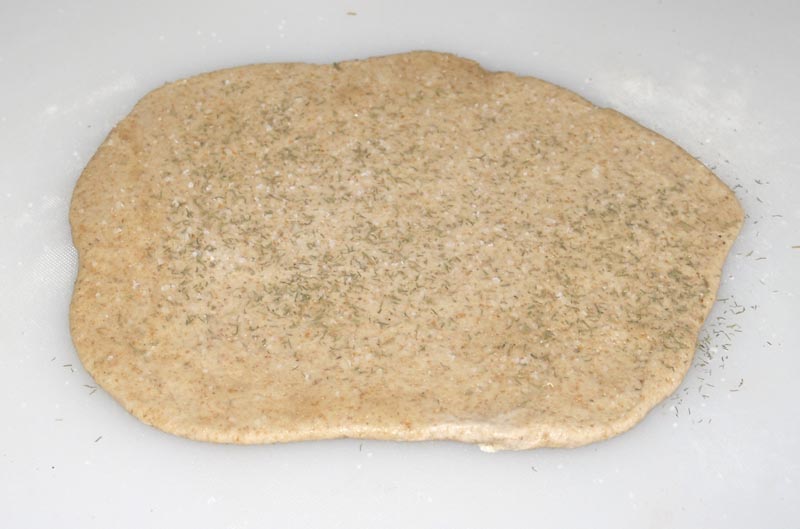
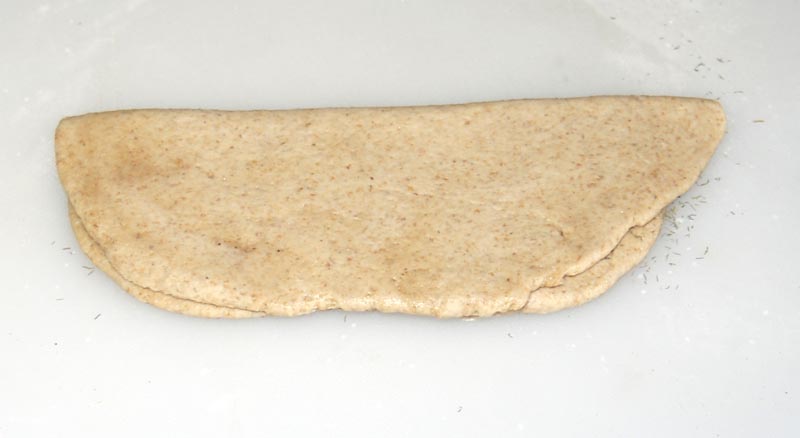
Add the seeds of your choice on half of the dough. I used black seasame seeds and brown mustard seed. Fold over again and roll out.

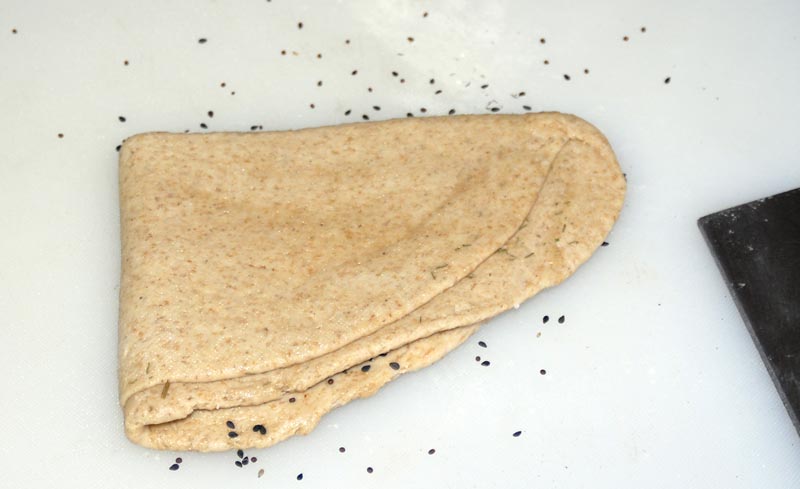
Chop into smaller pieces, and run it through a pasta machine on the widest setting (#0 on my Atlas). Fold again.



Run these through on #0 again, then on #1, then finish on #2.
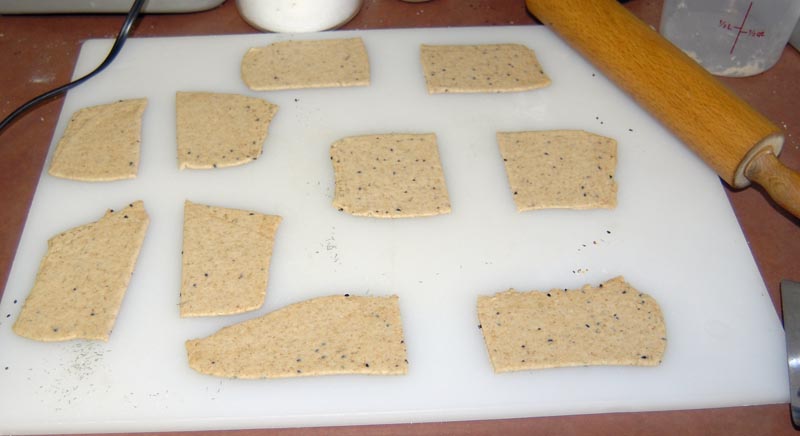
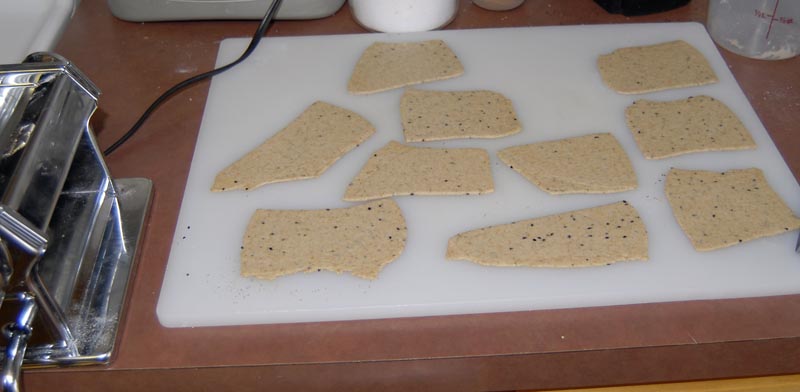
Put them on parchment paper, spray with olive oil, and sprinkle with kosher salt and more seeds. Gently roll them again with a pin to seat the seeds, then dock many, many times with a fork.
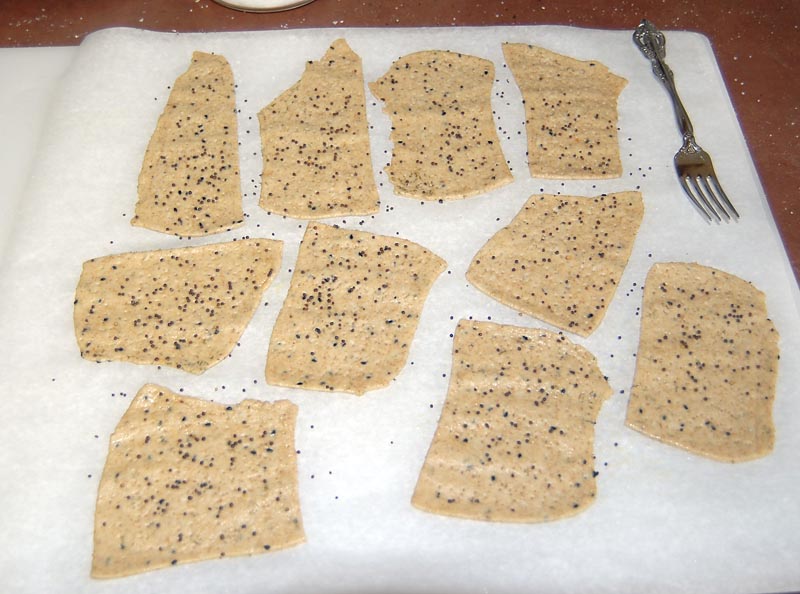
Cook for 30-40 minutes at 350 degrees F. Then turn the oven off, crack the door, and let them sit for another 10-15 minutes, watching to make sure they don't overbrown. The picture shows them at the end of 30 minutes. The final color can be seen on the plate, above.

Move to a cooling rack and let sit (the ones on the rack below are the ones from the original Skyrim batch. The ones on the plate at top are from a subsequent test batch.) Break into smaller pieces as desired.
